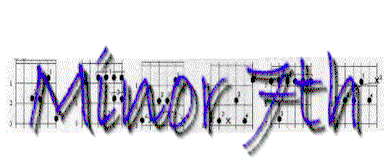

Hank Harris "Here", Sunbunny 336, 2001
Hank Harris lives in these 12 songs like a prairie dog on the range. The
South Dakota-based singer/songwriter sits as comfortable as 10-year-old jeans
as he seamlessly segues from reggae to country to jazz to power pop to slinky
blues on "Here," his second CD. Harris smoothly tosses off phrases such as
"she's my MSG, my formaldehype" and "I was right on time when I missed you"
like he's saying hello. A dazzling pop craftsman with a wry, pleasantly
humorous take on the world, his songwriting hooks never come up empty.
Harris's voice and fine musical cast will grow on you like ivy in New
England. This keeper just gets better and better with each listening.
©Fred Kraus
Terry Callier "Alive", Mr. Bongo MRBCD19, 2001
Jazz-folk guitarist Terry Callier's live set from the Jazz Cafe in London presents a spirited overview
of his storied career which has spanned four decades. On Alive he's accompanied by a
seasoned septet that includes horn/woodwind, percussion, bass, and an additional guitar.
Phrasing his vocals within the band's smooth interplay Callier displays a mastery of
dynamics, at one moment scat-singing, another moment whispering, then breaking into a
heartfelt wail to accent each lyric. Opening with "Ordinary Joe" the rhythm section
breaks into a double-time swing groove as the Chicago native melds soul, gospel,
and R & B with fervor. Addressing social issues in the haunting rendition of "African
Violet", singing the blues in "You're Gonna Miss Your Candy Man", crooning on the romantic
ballad "What Color Is Love", and drawing the audience to shout out "Amen' and 'Hallelujah"
during a solo reading of Curtis Mayfield's "People Get Ready", Callier's expression of the
human condition is honest and warm. His acoustic guitar playing is exemplary throughout each
cut. Callier employs pedal tone arpeggios and sustained chords thickened with a chorus
effects which allows his rhythm section plenty of room to embellish the songs with solos
and multiple voicings. The album concludes with backing vocalist Veronica Cowper and
Callier duetting on "I Don't Wanna See Myself" which evokes classic Motown as each singer
soars higher and higher over a syncopated back-beat while guitarist Jim Mullen and sax man
Gary Plumley improvise with clarity and enthusiasm. You'd be hard-pressed to find a better
acoustic jazz concert album than Alive.
©Tom Semioli
Jennifer Daniels "Dive and Fly", TNtrees Music TN-00022, 2001
Jennifer Daniels is a folk-rock singer who pens intimate tales and sets them to intriguing
melodies. Like Tori Amos, Paula Cole, and Delores O'Riordan, Daniels is an emotive singer
with a voice that soars, cracks, and ascends into a stirring falsetto/vibrato with
assertiveness and optimism. She and her band rock ala CSN & Y in the cuts "Day To Live",
"Ohio" (no relation to the 4 Way Street classic) and "Daylight Running" with a solid
in-the-pocket groove that bedrocks swampy slide guitars and shiny vocal harmonies.
The title track, along with "Try To Find Me" and "River", depicts a captivating synthesis
of acoustic guitar with a futuristic orchestral backdrop utilizing tape loops, a mellotron,
cello, and mandolin. "He Dances" is an ethereal dirge which melds ambient guitars and tribal
rhythms throughout a chilling tale of a relationship that is the stuff of Stephen King
novels. Daniels even slips in a hidden acapella track, the traditional Irish song
"Danny Boy" which gives evidence to the singer's strong roots and musical influences.
"Dive and Fly" is a stellar collection from an artist that's primed for greener commercial
pastures. Major labels please take note.
©Tom Semioli
James Emery "Luminous Cycles", Between the Lines btl 015, 2000
"Luminous Cycles" evokes a kind of metropolitan angst of profound
reflection - cityscapes - a coffee house at 3 am. The tones spill into one
another and the harmonies reach atonality in a fascinating display of
structural and angelic hypertension. Some of the music is bold, the rest
just very beautiful, soft even. Emery's guitar playing is staged as a
ghostly reminder of the music's beginnings and endings. In order to fully
enjoy this music one must have a degree of patience and an appreciation for
complexity and atonality. Many of the selections make use of lots of wind
instruments - saxophones, flutes, clarinets, while at the same time
marimbas, vibes, and even a glockenspiel are used to juxtapose the deep
bass rifts and Emery's signature guitar playing. The album features 8
compositions, each of which range somewhere between 7-12 minutes in
length, and while every song contains its own musical "head," all of
Emery's music has a wonderfully improvisational feel.
©Bernard Richter
Ken Bierschbach "Somewhere Out There", Bish 102, 2001
Ken Bierschbach knows how to jigsaw together a song so that the finished
patchwork is seamless and genuine. Rampant on "Somewhere Out There" are Dan Fogelberg-like
self-harmonies and hooks, minus the polished-to-a-shine production of latter-day Fogelberg.
The resemblance on "That's Life" and "A Song Unsung" is so uncanny, in fact, that you might
scratch your head wondering if Bierschbach is a Fogelberg ghost writer. There's an
unfortunate tendency to fill musical deadspace between vocal lines with intrusive and
redundant electric lead lines on this recording that might be better handled by keyboards,
but it sounds easy to de-bug this one glitch.
©Alan Fark
Cyndie Hasty "Temptation", Kenjamin Music, 2001
Writing about love isn't quite like dancing about architecture, but it's
close. Singer/songwriter Cyndie Hasty tries wrapping her arms around our most
ephemeral and elusive emotion from a country-inflected perspective. On
Temptation, her second CD, Hasty takes on several personas in songs that
unfold like mini-short stories on this 12-track quest, from the regretful
philosopher, to the one betrayed, to the vengeful one left behind.
Best offering is her stellar, bluesy "Honey, Please Forgive." Its snakey
guitar runs, fine piano and Hasty's earnest vocals combine for a
shiver-inducing sincerity. Mostly a husky-voiced crooner, Hasty doesn't shy
away from kicking it up a couple of notches in the foot-stompin' "Crossing
the Land."
©Fred Kraus